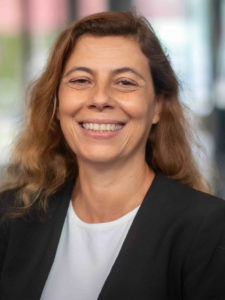New Journal of Materials Chemistry A Scientific Editor
Welcome to Sofía Calero
Journal of Materials Chemistry A is delighted to welcome Prof. Sofía Calero to the Editorial Board as a Scientific Editor. Please join us in congratulating Sofía on her new role and find out more about her in the interview below:

Sofía Calero is a professor of Applied Physics and chairs the Materials Simulation and Modelling group at the department of Applied Physics and Science Education, at Eindhoven University of Technology, The Netherlands. Dr. Calero is part of the Board of Directors of the International Adsorption Society and the Spanish Adsorption Group, which she currently chairs. She is the author of over 300 refereed scientific publications and has been the recipient of numerous prestigious scientific prizes and Awards, including the Marie Curie Excellence Award, ERC Consolidator Grant, Salvador de Madariaga Grant, Dutch VPP-KNAW grant, Spanish Royal Society of Chemistry awards for Young Researchers and later on for Scientific Excellence and the Irene Curie Grant. Her research involves the application of molecular simulation to industrially relevant systems and the development of force fields, algorithms and simulation methods to reverse-engineer properties of porous materials. What does it mean to you to join the Editorial Board, as a Scientific Editor on Journal of Materials Chemistry A? Joining the board as a Scientific Editor gives me the opportunity to be in touch with the most advanced science in the materials field. This is great for me, as I understand it would be for all those scientists who enjoy the work they do. What is the current biggest challenge you face in your field? There are many. In silico work on materials is now in a very good moment. Computers are faster and we are increasingly immersed in the development of efficient methodologies. Accurate and transferable force fields remain a challenge for many systems. Examples are amorphous and defective materials, challenging properties related to energy production and storage or, in the field of adsorption, large complex adsorbates that can lead to adsorbent phase transitions. Why do you feel that researchers should choose to publish their work in Journal of Materials Chemistry A? Because it is a very good journal, addressing some of the most emerging challenges for current materials. Can you tell us about one of your latest Journal of Materials Chemistry A publications? It was related to work to evaluate the performance of adsorption heat pumps and cooling systems (https://pubs.rsc.org/en/content/articlelanding/2024/ta/d3ta05258c). To do this, we combined adsorption data of alcohols in MOFs with a thermodynamic model, generating a process that allowed us to obtain, among other properties, the coefficient of performance, the working capacity, the specific heat or cooling effect and the heat released in the adsorption and desorption cycles. Furthermore, our process has the advantage of identifying the optimal conditions for each adsorbent-fluid pair.
|










